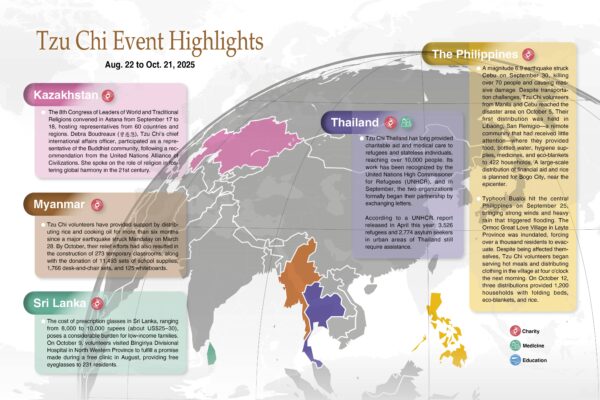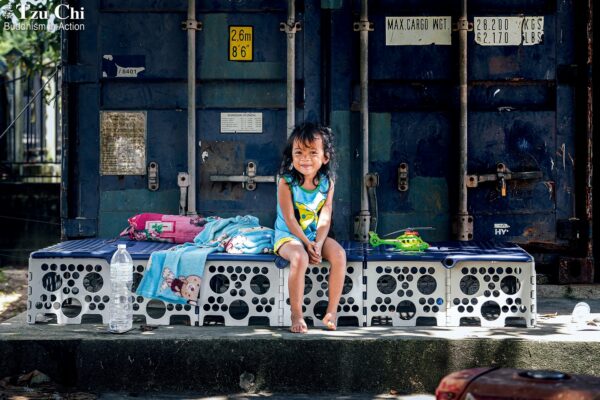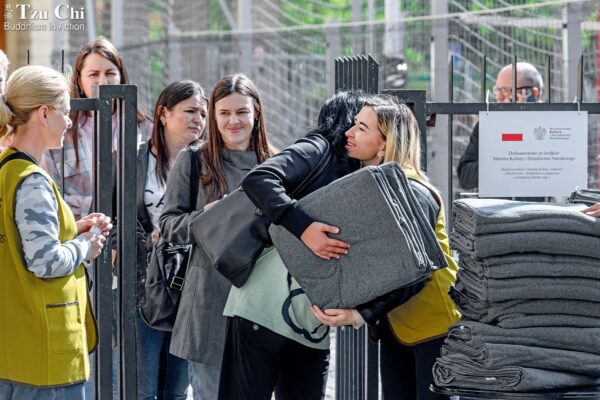Narrated by Wu Kun-chi
Compiled by Liao Zhe-min
Edited and translated by Wu Hsiao-ting
An orthopedist from Hualien Tzu Chi Hospital, eastern Taiwan, recounts his experience helping with the rescue work at the scene of the train wreck.
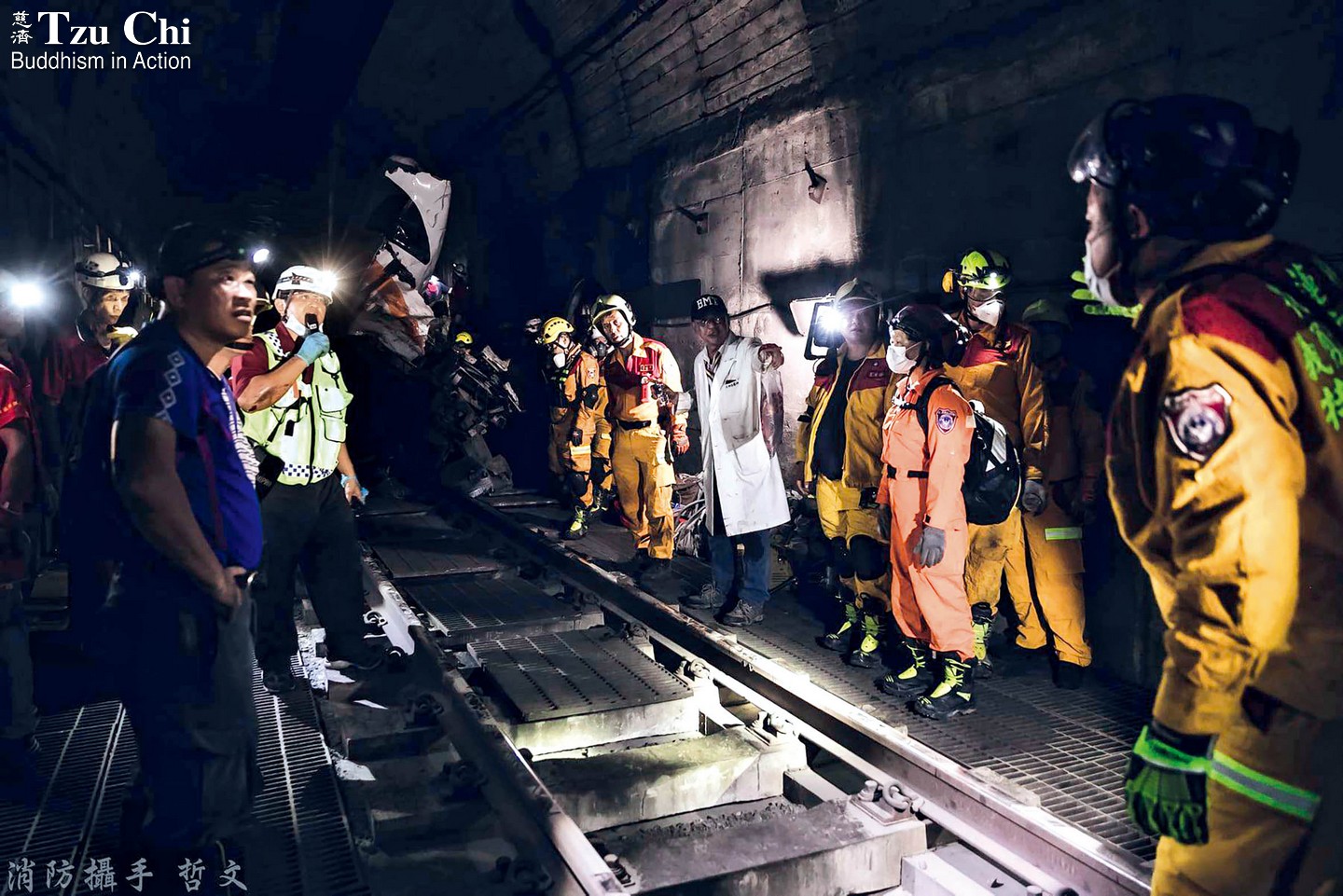
Dr. Wu Kun-chi (吳坤佶, in white coat) participates in the rescue work in the aftermath of the train accident. Cai Zhe-wen
I’m a medical doctor, but also the head of the Hualien County fire department’s volunteer emergency rescue team. Our duty is to provide first aid at disaster scenes or in other emergency situations. On the morning of April 2, I was seeing outpatients in the orthopedics department of Hualien Tzu Chi Hospital. Some time after nine o’clock, I received a phone call informing me that a Taroko Express train had derailed. I received another phone call after ten with the news that a large number of passengers were stuck in the distorted train wreckage and that the rescue workers were having difficulty freeing them. I immediately realized the magnitude and severity of the disaster and knew I had to join the rescue operation. I walked to where my patients were waiting for me, explained the emergency situation, and apologized to them for having to miss their appointments. “I really need to rush to the crash site,” I told them. Thankfully, my patients all graciously understood, so I left right away to render what help I could.
Pressing forward
It was 11 o’clock when I arrived at the scene of the accident and jumped into the rescue efforts. I didn’t even have the time to change out of my doctor’s white coat. As soon as I arrived, I donned my rescue uniform and gear on top of my white coat, then followed fire department personnel into the train. Guided by the firefighters, I first climbed onto the roof of the train before getting down to the ground and clambering through Car No. 6 into Car No. 7, one of the carriages with the worst casualties. Once inside, we began identifying passengers who were still alive, then broke into teams to free or move the injured from the twisted carriage. We placed the injured beside the tracks as they waited to be sent to a hospital.
Most people have taken a train before and know what the inside looks like. They may even have walked through many train carriages before. I’m one of those people. But this train was like no other. Its front portion, so badly battered by the impact of the crash, was twisted and torn almost beyond recognition. Even negotiating our way through it was a challenge. The train tracks were in pieces too. With the train and tracks in such terrible shape, it was easy to imagine the condition of the passengers killed or badly injured. The scene was so grim and depressing it was hard not to be affected or shaken up. I encouraged my fellow rescue workers to not lose heart in the face of such death and destruction, telling them that the dead would thank them for bravely helping them out.
A deceased female passenger had been thrown out of the carriage she had been in. Her face was in bad shape. I covered her with my rescue uniform. What followed was a series of rescue efforts.
A father had two young daughters with him. The older daughter had sustained a laceration to her head, but the younger one, whom the father was holding in his arms, was in more critical condition. I felt the younger one’s carotid artery and detected a weak pulse. We moved her to the front so that she could be the first to be transferred to a hospital. Her older sister and father were the next in line.
Next we tended to a young woman with an injured back. After that, we found a man, Mr. Chen, stuck in the door between Cars 7 and 6. I climbed down to pull him out. As he was waiting to be sent away for medical attention, he kept saying that he was very cold. He had lost a lot of blood due to his broken legs, which was why he was feeling so cold. I took off my white coat and put it on him, saying, “Hang in there. Help will soon be here.”

Near the end of the rescue mission, Dr. Wu holds a child in his arms for an injured mother pending her delivery to the hospital. Cai Zhe-wen
A sad scene
Everyone worked heroically to free those that had been injured. The survivors were sent one after another to the hospital. One person I helped, a young toddler, made an especially deep impression on me. The accident had obviously given the young one a bad scare. In his anxious, frightened state, he was holding on tightly to his injured mother. I asked the mother to let me hold her child so that we could move her and get her to the hospital. The child struggled when I reached out to him, unwilling to let me hold him. Realizing that the doctor’s coat I was wearing must be scaring him, I soothed the toddler by saying that his mom was injured and needed care and that I wasn’t giving him any shots that day. I told him not to worry. The child settled down soon after and began to lean docilely against me. He was a brave little one. I assured the mother her child would follow her to the hospital and asked her not to worry. Once the child had settled down, it got quieter on-site, and everyone around seemed better able to focus on their task.
The front cars of the train had crashed into a tunnel. It was dark and stuffy where we were working. Many rescue workers at the scene were equipped with oxygen tanks, but some weren’t. I wasn’t either. The smell of blood was so strong I eventually had to rush outside for some fresh air. I gulped in the air and had a drink of water before going back to the tunnel to finish my task.
The first responders and rescue workers bent over backwards to carry out their difficult rescue mission. They repeatedly made their way into and out of the badly distorted wreckage to evacuate the deceased and injured. They put aside their feelings and focused on the task at hand, helping to get the deceased and injured away from that sad, sad place.
First responders overcame seemingly insurmountable difficulties to rescue survivors from the battered train. Wu Kun-chi
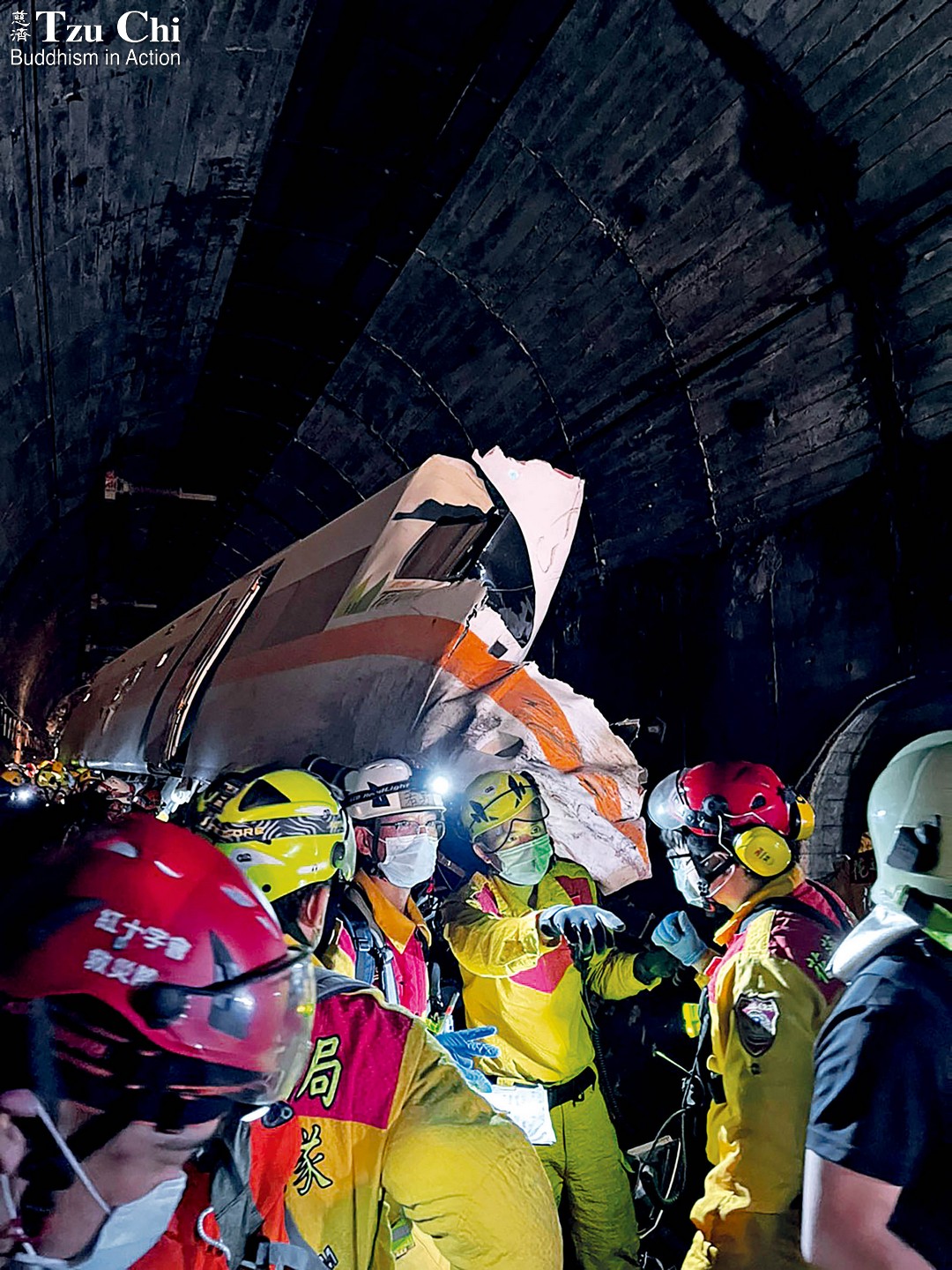
Emerging from the bad dream
At first, the more seriously injured passengers—along with the first three bodies—were delivered to Chongde Train Station, which had been designated as the transfer point in the aftermath of the accident. But soon it was determined that the facilities at the small station were inadequate to make it a good transfer point, so the transfer point was changed to the bigger Xincheng Train Station.
The second batch of passengers evacuated from the crash site were mostly deceased. I arrived at Xincheng Train Station to assist authorities in examining the deceased before they were sent away to the funeral home. As soon as I arrived, I saw that Tzu Chi volunteers had used blue partitions to create a private passageway and a temporary morgue for the deceased. The efforts everyone was making to preserve the dignity of the deceased were what moved me the most during the whole incident.
A few days have passed since the train crash. I’ve been doing my best to forget what I witnessed in the tunnel so that I can return as soon as possible to a normal life. I tell myself that despite the tragedy, there are still many good things and good people out there in the world. I sincerely hope that everyone who endured this excruciating experience bravely carries on despite the pain in their hearts. It will be easier for them that way, instead of dwelling in the sorrow. After all, life has to go on. The man I rescued from being stuck in the doorway between cars, Mr. Chen, is a good example. His condition stabilized after treatment at Hualien Tzu Chi Hospital. I believe he will be one of the first ones to emerge from this nightmare, because he has already started showing care for others. For example, he has shown his care for his wife by voicing his concern that she might be too tired from looking after him. He has also tried to help others.
The death and destruction I faced at the accident site were difficult to take. But I’m not a hero—I’m a doctor. In times of need, it’s our inescapable duty to help others. Any doctor in Taiwan would have done the same thing in my shoes.

